Purchasing Tools

No. 1 Finish
Is produced by rolling stainless steel that has been heated prior to rolling (hot-rolling). This is followed by a heat treatment that produces a uniform microstructure (annealing) and ensures that the stainless steel will meet mechanical property requirements. After these processing steps, the surface has a dark non-uniform appearance called “scale”. Surface chromium has been lost during the previous processing steps, and, without removal of the scale, the stainless steel would not provide the expected level of corrosion resistance. Chemical removal of this scale is called pickling or descaling, and it is the final processing step. A No. 1 finish has rough, dull, and non-uniform appearance. There may be shiny spots were surface imperfections were removed by grinding. It is generally used in industrial applications, such as equipment for elevated temperature service.
Applications
Air heaters, Annealing boxes, Boiler baffles, Carburizing boxes, Crystallizing pans, Firebox sheets, Furnace arch supports, Furnace conveyors, Furnace dampers, Furnace linings, Furnace stacks, Gas turbine parts, Heat exchanger baffles, Heat exchanger tubing supports, Incinerators, Industrial oven liners, Kiln liners, Oil burner parts, Recuperators, Refineries, Tube hangers.
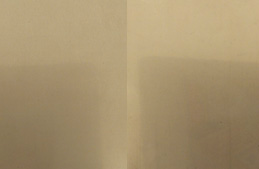
No. 2B Finish
Is a bright cold rolled finish commonly produced in the same manner as No. 2D, except that the final light cold rolling pass is done using polished rolls. This produces a more reflective finish that resembles a cloudy mirror. Finish reflectivity can vary from manufacturer-to-manufacturer and coil-to-coil with some coils looking quite mirror-like and others being fairly dull. No. 2B is a general purpose cold rolled finish commonly used for all but exceptionally difficult deep drawing applications. It is more readily polished to high luster than a No. 1 or No. 2D finish.
Applications
Bakeware, Chemical plant equipment, Dye house equipment, Flatware, Laundry and dry cleaning, Paper mill equipment, Pharmaceutical equipment, Plumbing fixtures, Refrigeration, Sewage treatment, Sheet metal products, Small tanks, Solar collector panels, Vacuum drum dryers, Waste fuel pool liners, Wheel covers.
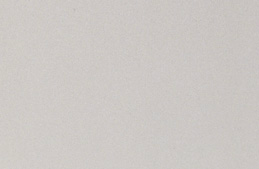
No. 2D Finish
Is a uniform, dull silver gray finish that is applied to thinner coils whose thickness has been reduced by cold rolling. After rolling, the coil is heat treated to produce a uniform microstructure (annealing) and to meet mechanical property requirements. Pickling or descaling is necessary after heat treatment to remove the chromium depleted dark surface layer and restore corrosion resistance. Pickling can be the final step in production of this finish, but, when finish uniformity and/or flatness are important, there is a subsequent final light cold rolling pass (skin pass) through dull rolls. A No. 2D finish is preferred for deep drawing components because it retains lubricants well. It is used as a substrate when a painted finish is desired because it provides excellent paint adherence.
Applications
Automotive exhaust systems, Builder’s hardware, Chemical equipment, Chemical trays and pans, Electric range parts, Furnace parts, Petrochemical equipment, Rail car parts, Roof drainage systems, Roofing, tone anchors.
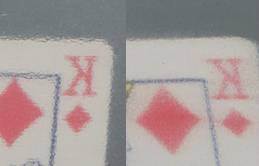
No. 2D Finish
Is produced by heat-treating (annealing) in a controlled atmosphere furnace. It has a mirror like appearance but may have some cloudiness and other imperfections. A finish that is designated “BA” has only been bright annealed. A finish that is designated “2BA” has been bright annealed and then passed between highly polished rolls. A minimal amount of roll pressure (skin pass) is applied. The process improves flatness and finish uniformity but does not significantly decrease thickness. Bright annealed stainless is sometimes buffed to attain a more mirror-like finish. It is often specified for applications where a highly reflective surface is desired.
Applications
Appliance trim, Appliances, Architectural components, Auto trim, Builder’s hardware, Chute liners, Commercial refrigerators, Cookware, Fishing equipment, Flatware, Food processing equipment, General hardware, Highway truck trailers, Mass transit cars, Radiant heaters, Range hoods, Scientific apparatus, Surgical instruments, Textile finishing equipment.
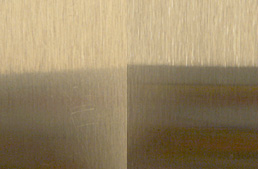
No. 3 Finish
Is characterized by short, relatively coarse, parallel polishing lines, which extend uniformly along the length of the coil. It is obtained by either mechanically polishing with gradually finer abrasives or by passing the coil through special rolls, which press a pattern into the surface that simulates the appearance of mechanical abrasion. It is a moderately reflective finish. When mechanically polishing, 50 or 80 grit abrasives are typically used initially and the final finish is typically achieved with 100 or 120 grit abrasives. The surface roughness is typically Ra 40 micro-inches or less. If a fabricator needs to blend in welds or do other refinishing, the resulting polishing lines are usually longer than on product polished by a producer or toll-polishing house.
Applications
Brewery equipment, Food processing equipment, Kitchen equipment, Scientific apparatus.
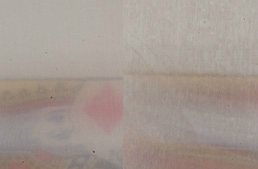
No. 4 Finish
Is characterized by short, parallel polishing lines, which extend uniformly along the length of the coil. It is obtained by mechanically polishing a No. 3 finish with gradually finer abrasives. Depending on the requirements of the application, the final finish can be anywhere between 120 and 320 grit. Higher grit numbers produce finer polishing lines and more reflective finishes. The surface roughness is typically Ra 25 micro-inches or less. This general-purpose finish is widely used for restaurant and kitchen equipment, storefronts and food processing and dairy equipment. If a fabricator needs to blend in welds or do other refinishing, the resulting polishing lines are usually longer than on product polished by a producer or toll-polishing house.
Applications
Appliances, Architectural wall panels, Beverage equipment, Boat fittings, Bus shelters, Clean rooms, Column covers, Dairy equipment, Elevator doors and interiors, Escalator trim, Food processing equipment, Furniture Highway tank trailers, Hospital surfaces and equipment, Instrument or control panels, Kitchen equipment, Luggage handling equipment, Mass transit equipment, Restaurant equipment, Sinks, Sterilizers, Storefronts, Water fountains.
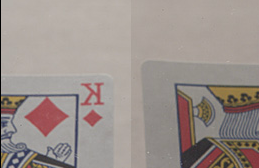
No. 8 Finish
Is the most reflective polished finish that is covered by the ASTM standards. It is produced in the same manner as the No. 7 finish except that the buffing is continued for an additional five to ten minutes. In comparison to a No. 7 finish, the grit lines are much less visible, but they can be seen if the finish is examined closely. The resulting finish is mirror-like but not a perfect mirror.
Applications
Clean rooms, Column covers, Mirrors, Ornamental trim, Press plates, Reflectors, Signage, Wall panels.
TR (Temper Rolled) Finish
Is specified when higher than normal mechanical properties are desired. Different temper levels are available (1/16 Hard, 1/8 Hard, 1/4 Hard, 1/2 Hard, 3/4 hard, Full Hard). These levels are defined by the yield and tensile strengths and elongation. Temper rolling is typically done on polished rolls and it produces a fairly smooth reflective finish.
